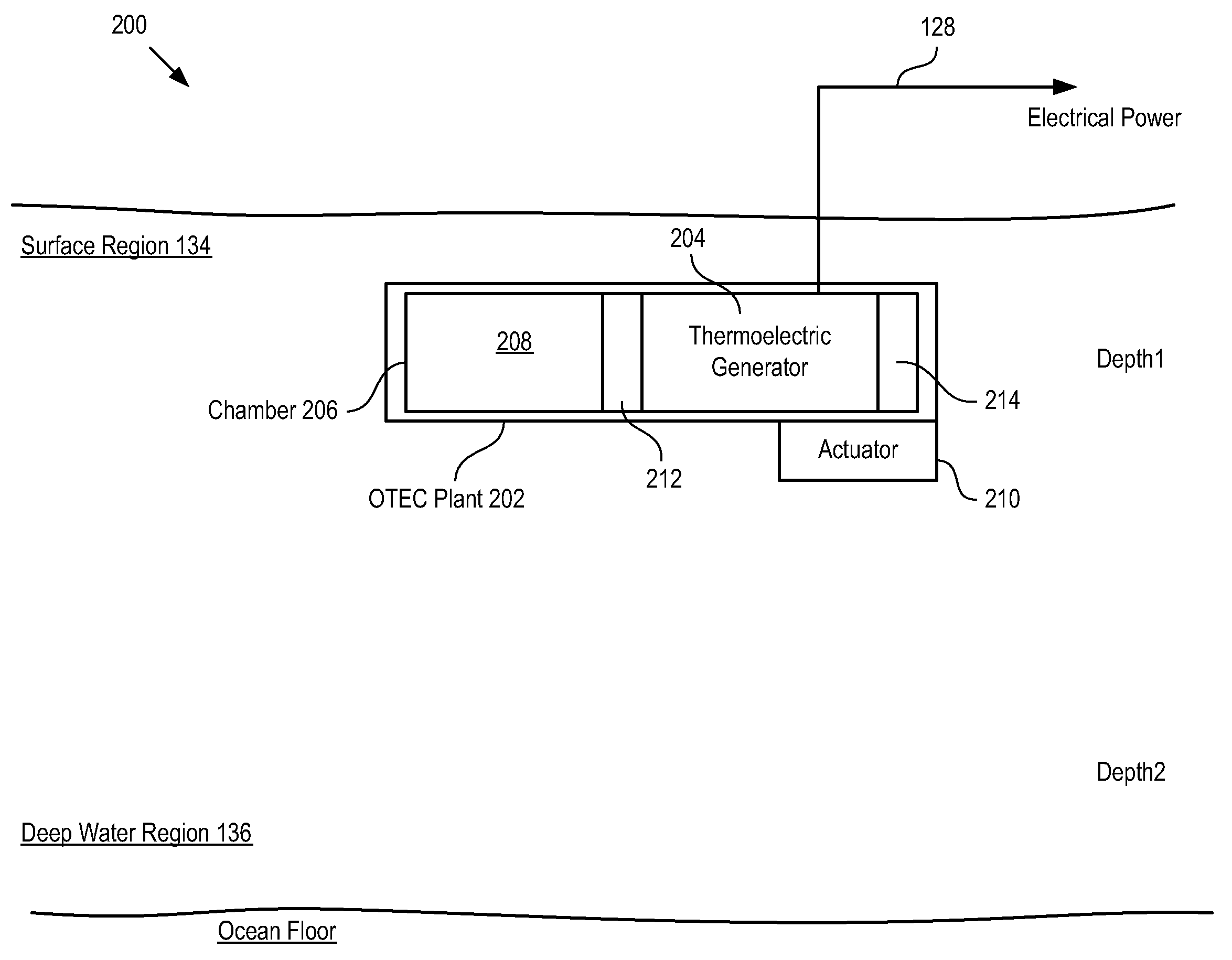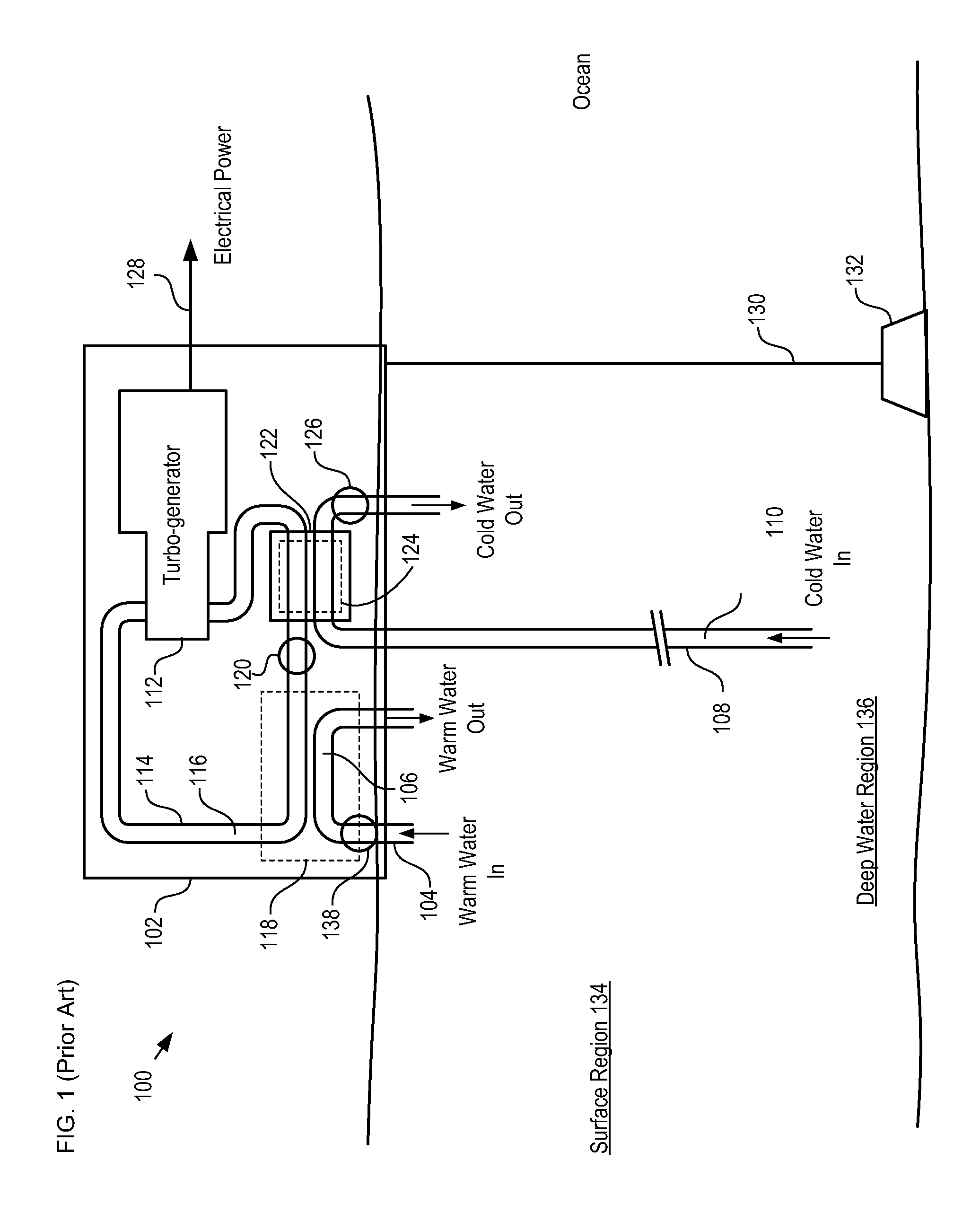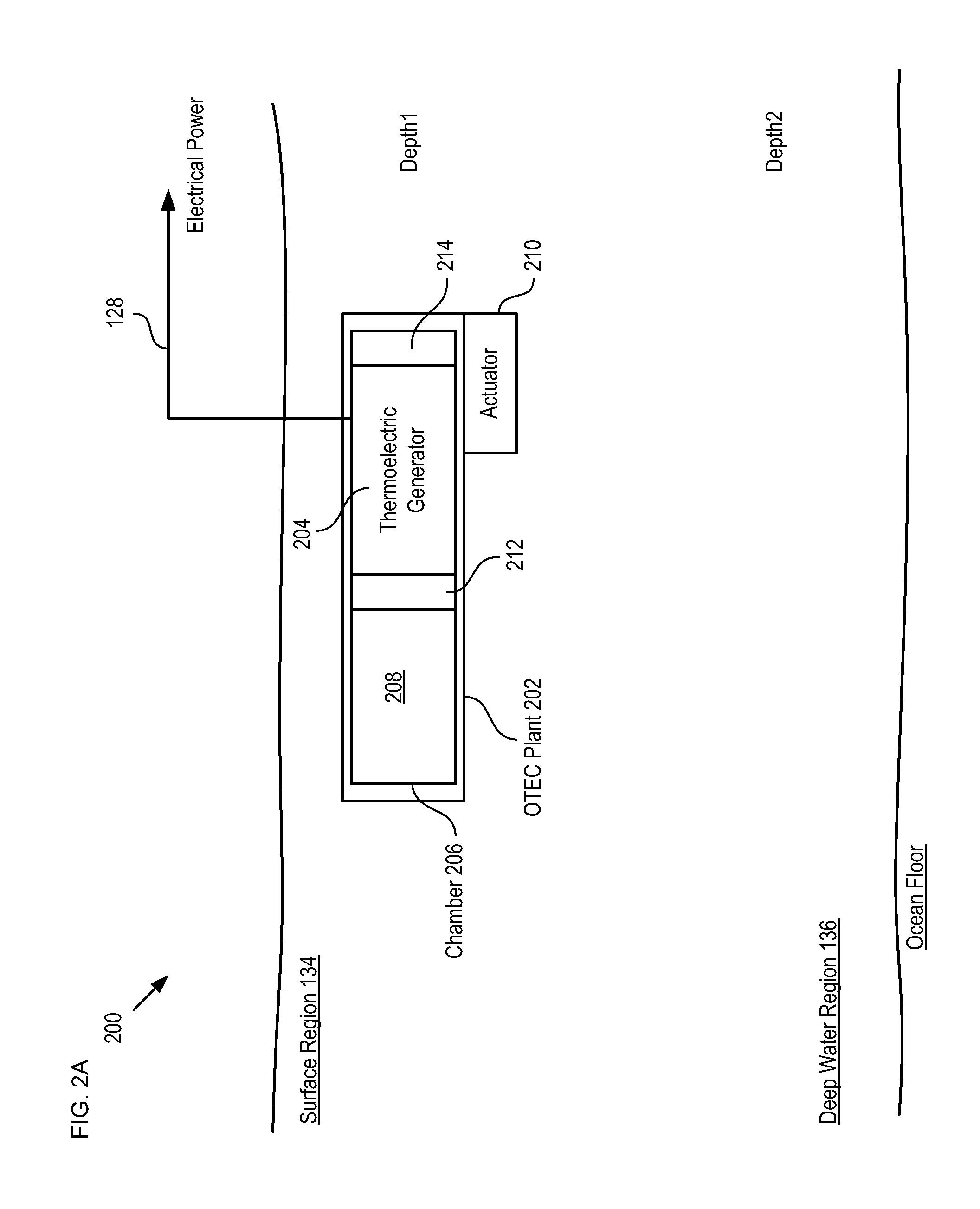OTEC System
a technology of otec and clathrate, applied in the direction of electric generator control, machines/engines, mechanical equipment, etc., can solve the problems of reducing the amount of energy required to run an otec plant, and reducing the overall benefit of otec power generation, so as to achieve the effect of less or no energy, positive buoyancy of clathrate compound
- Summary
- Abstract
- Description
- Claims
- Application Information
AI Technical Summary
Benefits of technology
Problems solved by technology
Method used
Image
Examples
Embodiment Construction
[0023]The following terms are defined for use in this Specification, including the appended claims:
[0024]Physically-connected means in direct, physical contact and affixed (e.g., a mirror that is mounted on a linear-motor).
[0025]FIG. 1 depicts a schematic diagram of a portion of a typical OTEC power generation system in accordance with the prior art. OTEC system 100 comprises platform 102, surface water conduit 104, deep water conduit 108, turbogenerator 112, closed-loop conduit 114, heat exchanger 118, pump 120, and condenser 122.
[0026]Platform 102 is a conventional floating energy-plant platform. Platform 102 is anchored to the ocean floor by mooring line 130, which is connected to anchor 132. Anchor 132 is embedded in the ocean floor. In some instances, platform 102 is unanchored to the ocean floor and platform 102 is allowed to drift, such as in what is commonly referred to as a “grazing plant.”
[0027]Surface water conduit 104 is a large-diameter pipe suitable for drawing water f...
PUM
 Login to View More
Login to View More Abstract
Description
Claims
Application Information
 Login to View More
Login to View More - R&D
- Intellectual Property
- Life Sciences
- Materials
- Tech Scout
- Unparalleled Data Quality
- Higher Quality Content
- 60% Fewer Hallucinations
Browse by: Latest US Patents, China's latest patents, Technical Efficacy Thesaurus, Application Domain, Technology Topic, Popular Technical Reports.
© 2025 PatSnap. All rights reserved.Legal|Privacy policy|Modern Slavery Act Transparency Statement|Sitemap|About US| Contact US: help@patsnap.com



